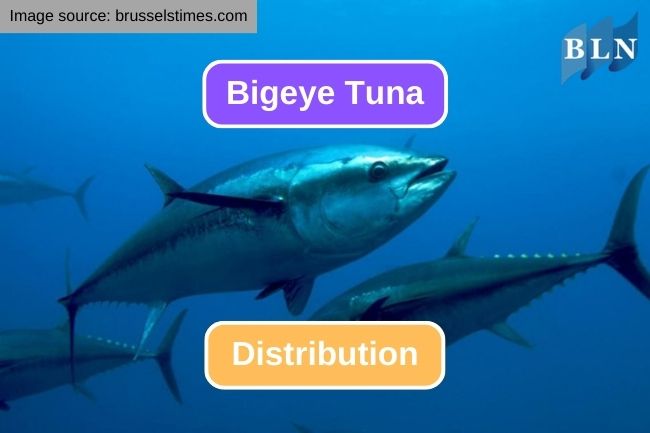The Fascinating Distribution of Bigeye Tuna
By. Nevanda - 09 Oct 2023
lautnusantara.com - Bigeye tuna (Thunnus obesus) is a species of tuna known for its global distribution in tropical and temperate waters. It shares its distribution with other tuna species, but bigeye tuna have specific habitats and environmental preferences that influence their presence in different regions. Here's an overview of the distribution of bigeye tuna:
1. Pacific Ocean
- Eastern Pacific: Bigeye tuna are found in the eastern Pacific Ocean, including the waters off the coasts of Central and South America. These fish are known to inhabit areas near the Eastern Pacific Ocean's convergence zones.
- Western Pacific: Bigeye tuna are abundant in the western Pacific Ocean, and they are an important target for commercial and recreational fisheries. This region includes waters around countries such as Japan, the Philippines, and Indonesia.
Read also: Get To Know About 11 Fun Facts of Giant Pacific Octopus
2. Indian Ocean
- Western Indian Ocean: Bigeye tuna are present in the western Indian Ocean, particularly off the coasts of countries like Sri Lanka and the Maldives.
- Eastern Indian Ocean: They are also found in the eastern Indian Ocean, around regions such as Indonesia and Australia.
3. Atlantic Ocean
- Western Atlantic: Bigeye tuna can be found in the western Atlantic Ocean, although they are less common in this region compared to the Pacific and Indian Oceans. They are present in waters near the eastern coast of the United States and the Caribbean.
- Eastern Atlantic: Bigeye tuna are more prevalent in the eastern Atlantic, particularly in the waters off the coast of West Africa.
Read also: The 8 Best Benefits of Eating Cuttlefish
4. Tropical and Subtropical Waters: Bigeye tuna are typically found in the warmer waters of the tropical and subtropical zones. Their distribution can vary seasonally as they migrate in response to changing water temperatures and the availability of prey. These migrations can lead them to move between different ocean basins.
5. Ocean Convergence Zones: Bigeye tuna are often associated with oceanic convergence zones, where different water masses meet. These zones tend to concentrate prey species, making them attractive for foraging bigeye tuna.
It's important to note that bigeye tuna are an important target for commercial fisheries, which has led to concerns about overfishing and population depletion. Sustainable management practices and international conservation efforts are crucial to maintain the health of bigeye tuna populations in the face of increasing demand for these fish in global markets.
Read also: Complete Guide to Choosing the Freshest Fish on the Market








